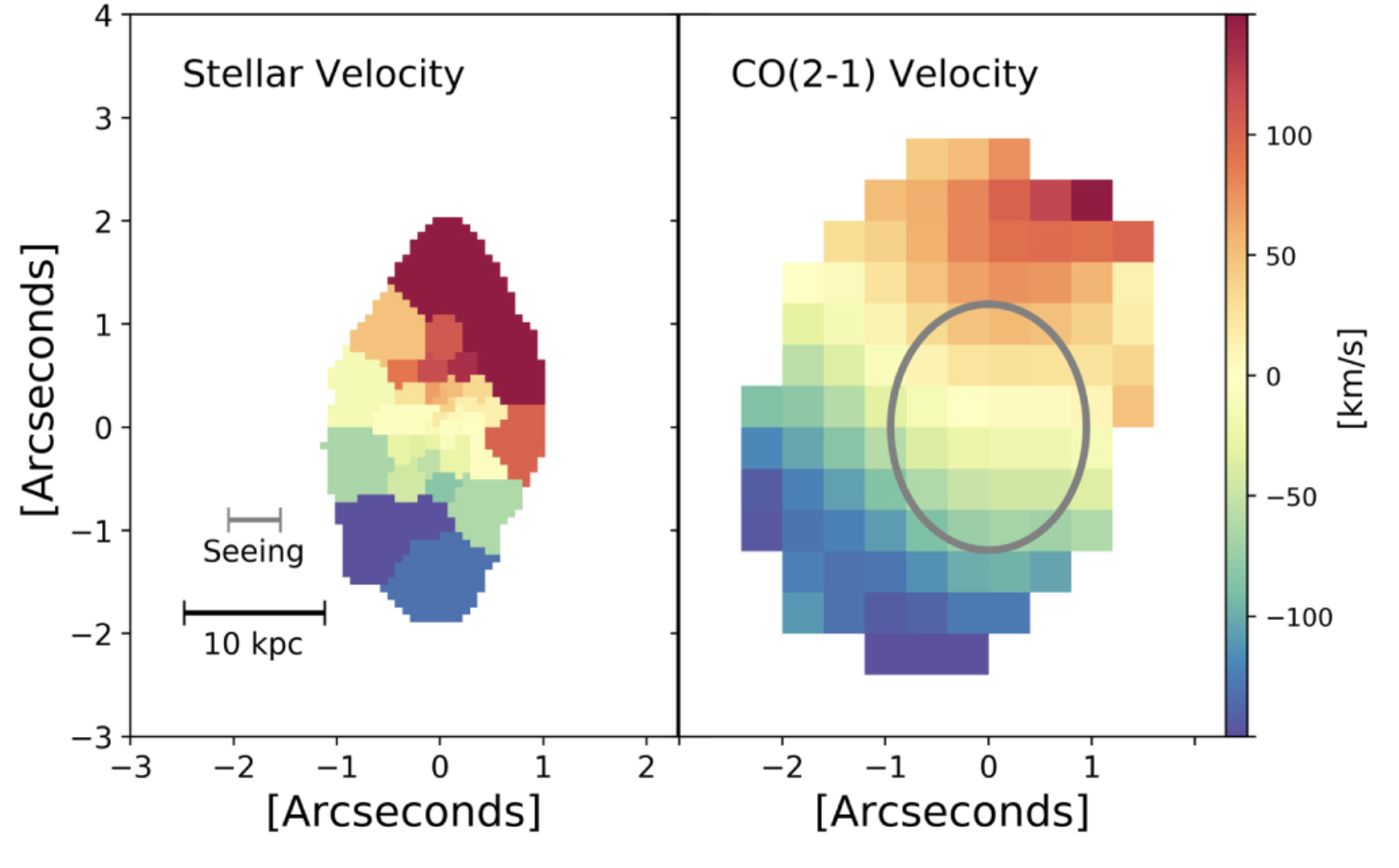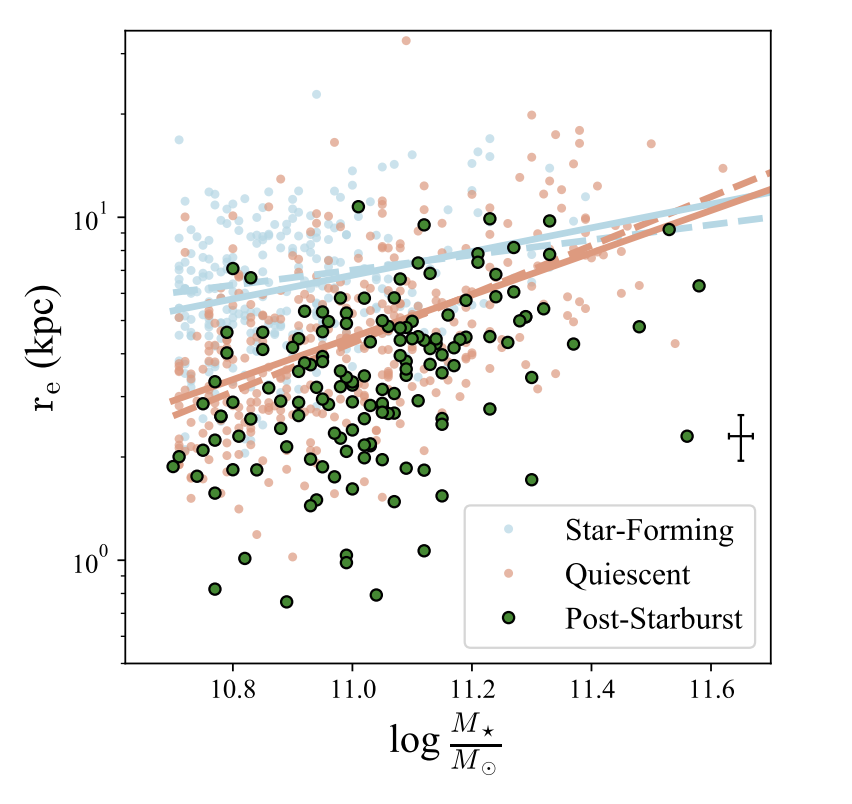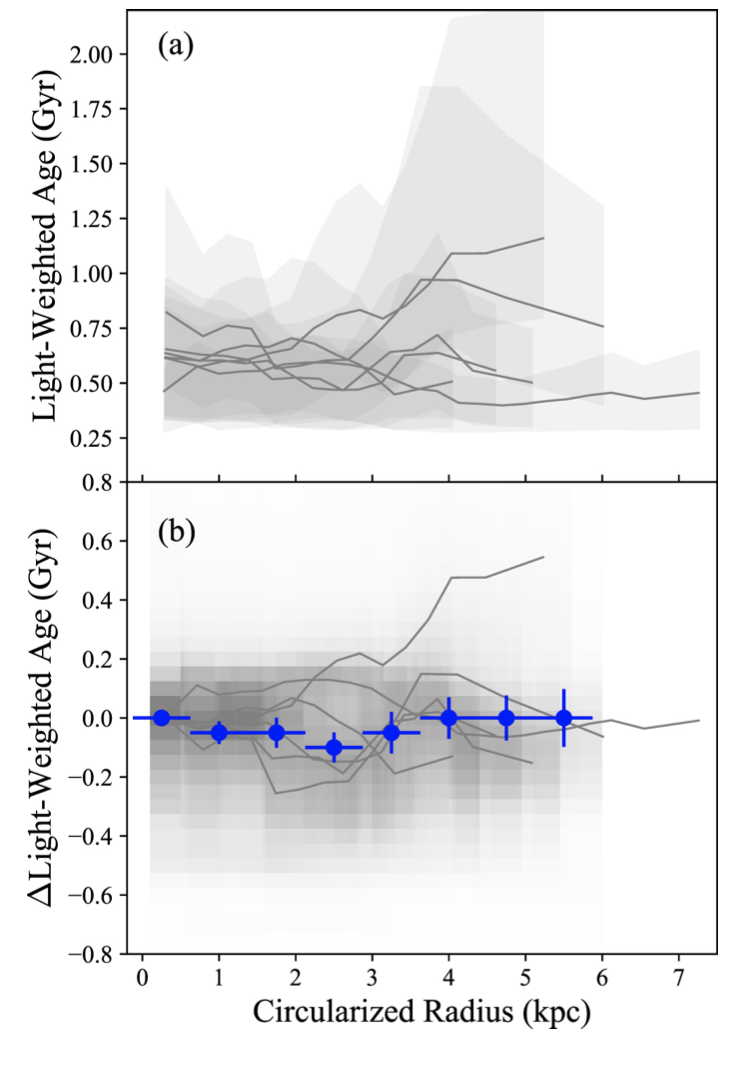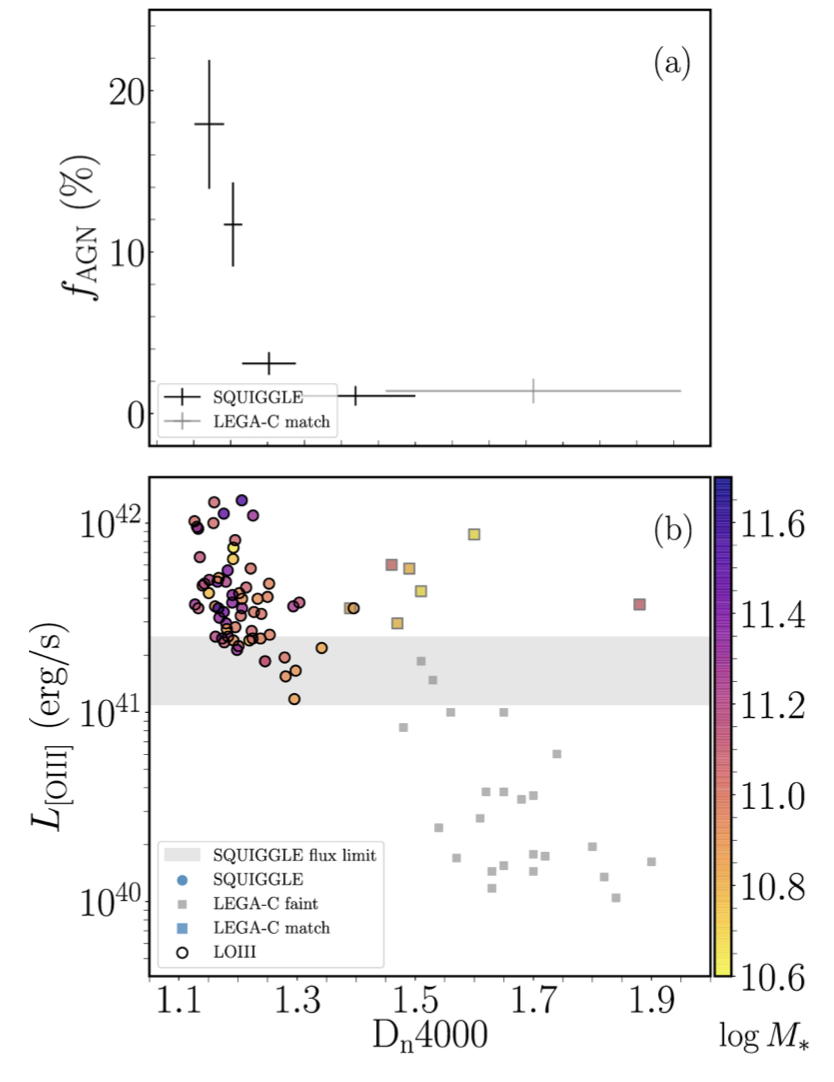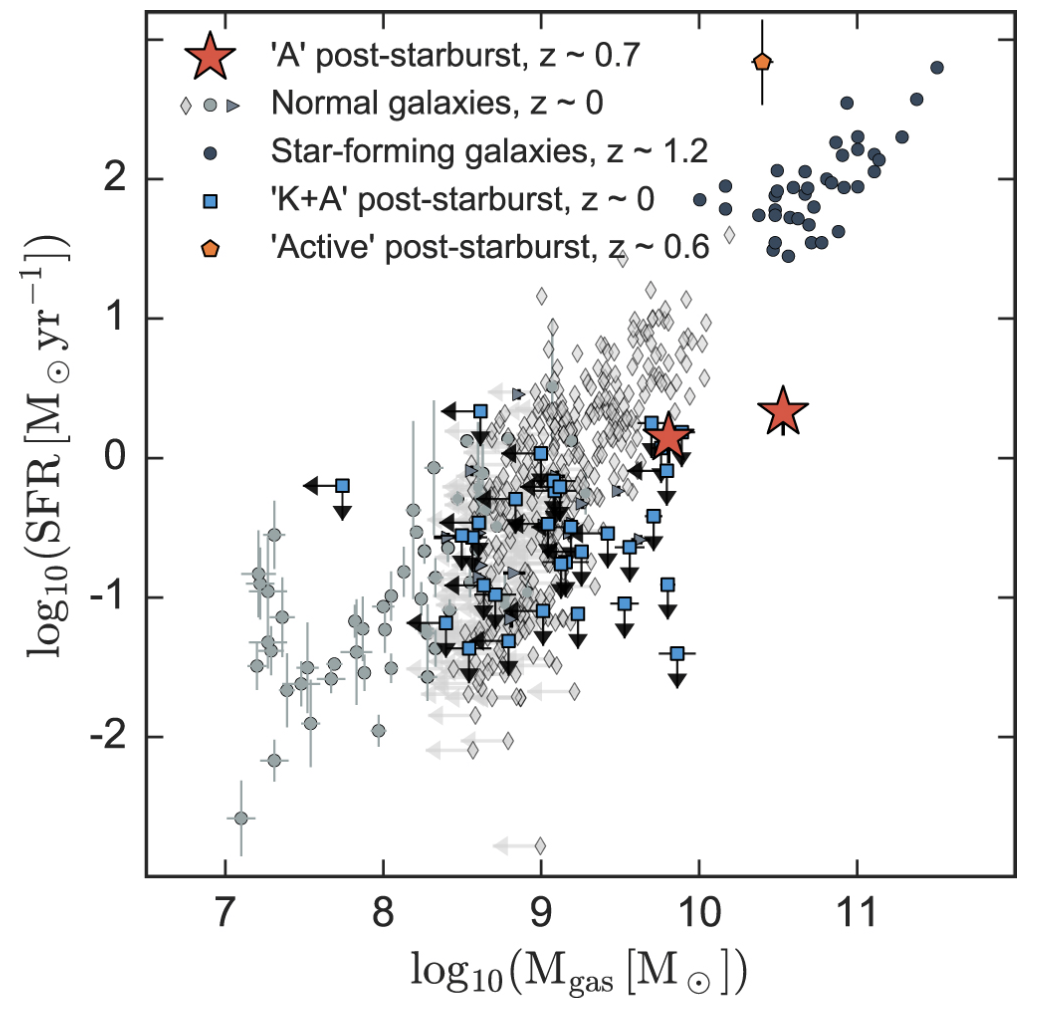
Studying Quenching in Intermediate-z Galaxies: Gas, Angular Momentum, and Evolution
The SQuIGGLE Survey
Characterizing the physical mechanisms that "quench" massive galaxies, transforming them from blue star-forming disks into quiescent red ellipticals, is a hotly debated and poorly understood aspect of extragalactic astronomy. The SQuIGGLE survey targets massive post-starburst galaxies at z∼0.6, which are observed within a few hundred million years after they stopped forming stars. Our team has assembled a multi-wavelength view of their detailed physical properties including: ALMA CO(2-1) observations of molecular gas, Gemini/GMOS measurements of stellar kinematics, VLA and Keck/NIRES measurements of obscured star formation and AGN activity, and HST and Subaru/HSC imaging of stellar structures. Together we are building a picture of the detailed properties of these transitioning massive galaxies to unveil the physical processes that drive their transformation.
Publications

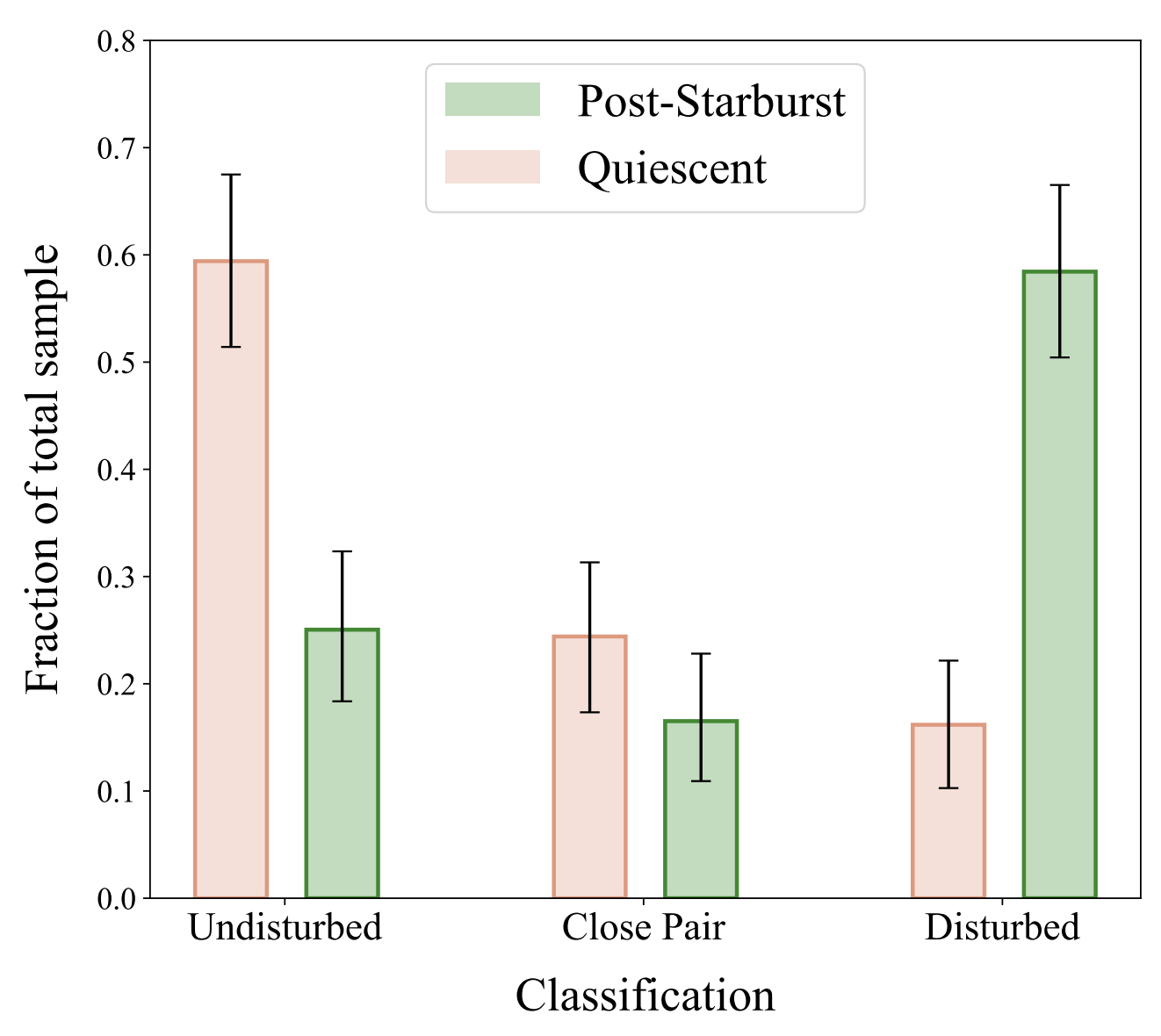
Merger Signatures are Common, but not Universal, In Massive, Recently-Quenched Galaxies at z~0.7 (Verrico et al. 2023)

Star Formation Suppresion by Tidal Removal of Cold Molecular Gas from an Intermediate-Redshift Massive Post-Starburst Galaxy (Spilker et al. 2022)
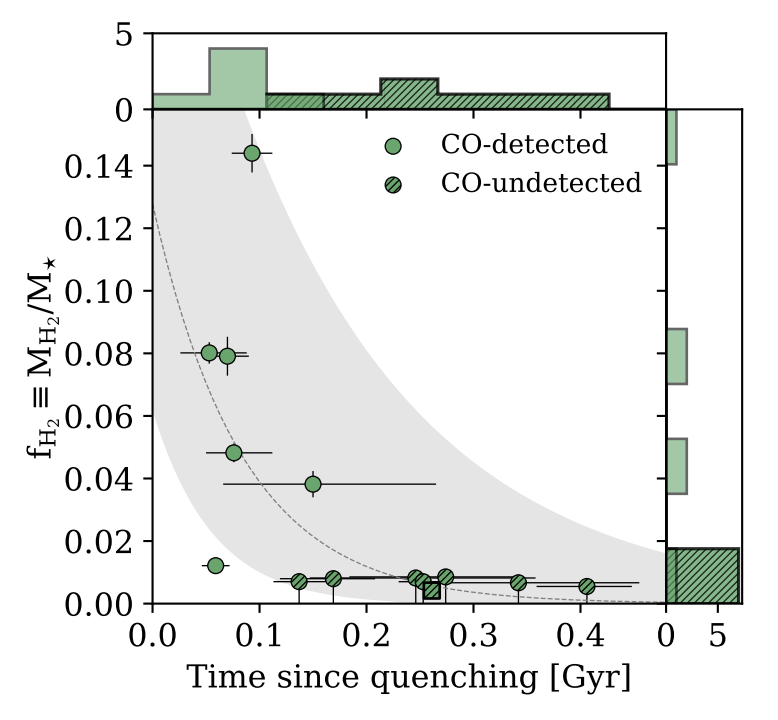
Star formation truncation precedes the loss of molecular gas by ∼100 Myr in massive post-starburst galaxies at z∼0.6 (Bezanson et al. 2022)
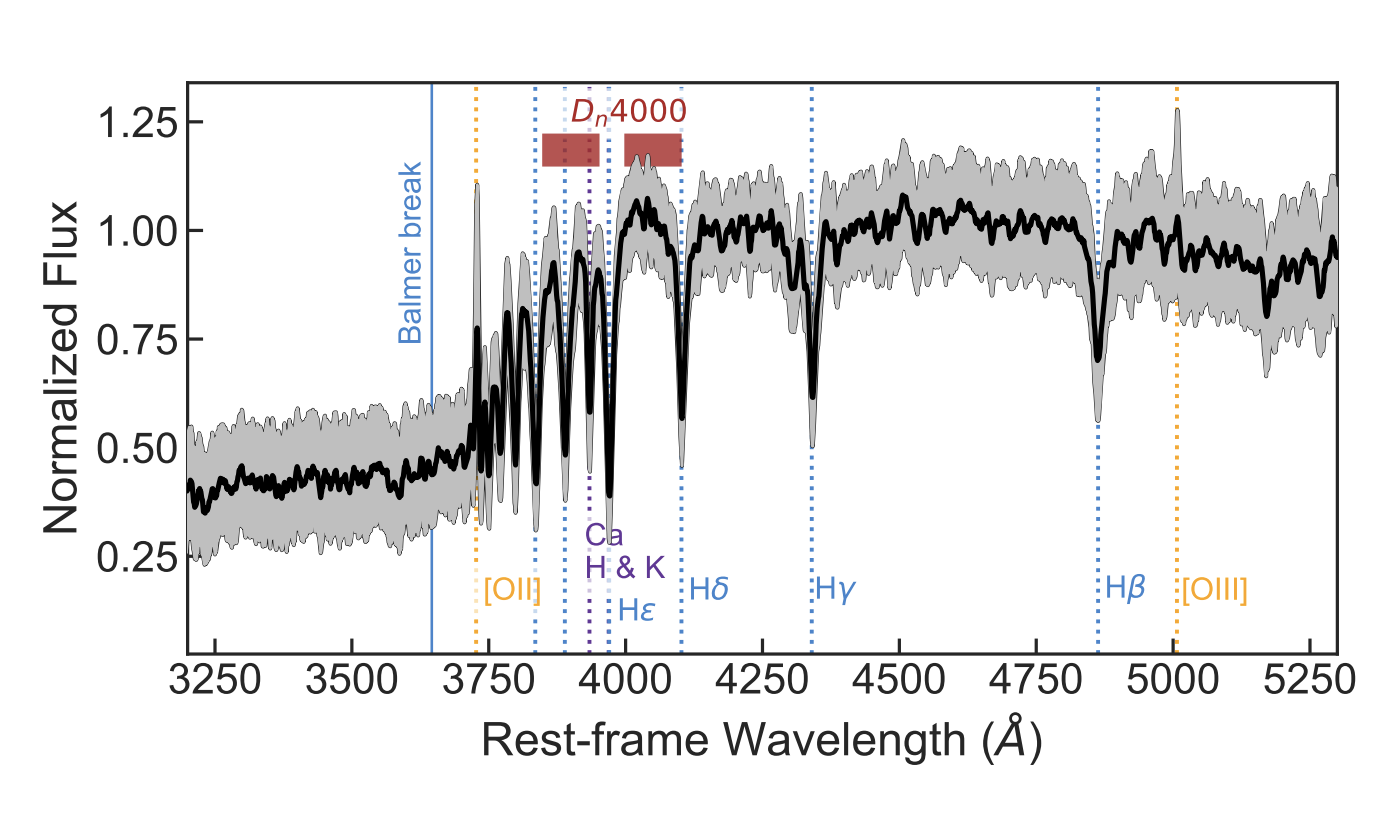
SQuIGGLE: Studying Quenching in Intermediate-z Galaxies -- Gas, AnguLar Momentum, and Evolution (Suess et al. 2022)
